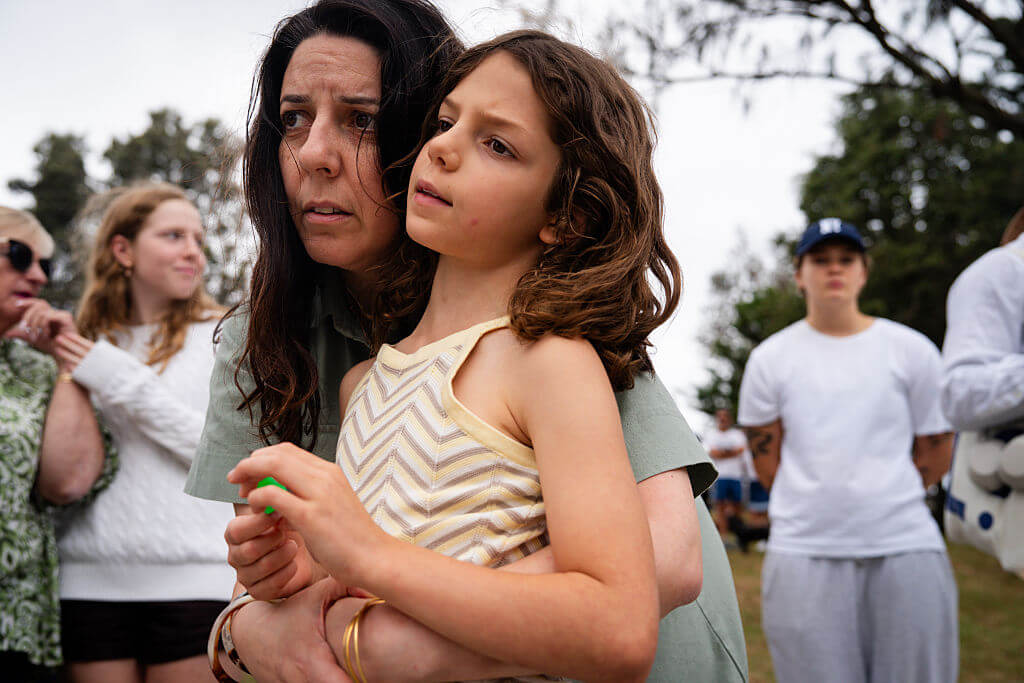Jewish LGBT Leaders Meet, But Can’t Yet Find a Vision Shared by All
A social justice activist from Oakland, Calif. A party planner from New York. The leader of a small havurah in Detroit. These were some of the 93 people who were invited to Berkeley, Calif., to help build a more cohesive movement for lesbian, gay, bisexual and transgender Jews.
This first-ever gathering, held in late June, had lofty goals. Funded primarily by the Charles and Lynn Schusterman Family Foundation, with support from the Richard and Rhoda Goldman Fund, the aim was to “forge a strategic vision to inspire and guide our actions over the next three years.”
The four national Jewish LGBT organizations that created the gathering had already done some moving on their own, merging into two. In May, the National Union of Jewish LGBTQ Students merged with Nehirim, which offers retreats and Jewish spiritual programming. In June, Jewish Mosaic, with its focus on research and education, merged with Keshet, an advocacy organization for LGBT inclusion in Jewish life.
The incentive for all the groups to arrive at a shared vision was in the room: The primary funders of this work would prefer to be solicited from fewer organizations with a common agenda. That did not happen. After days of wide-ranging discussions, organizers Gregg Drinkwater and Idit Klein hoped participants would be able to articulate common goals in one final four-hour session. Instead, the conversation broke down, as many participants expressed a need for more time to build relationships. But time had run out.
The idea that four organizations that had never before met face to face would emerge from a three-day event with a common vision and full-fledged action plan proved optimistic, and spoke to the inexperience of the organizers in building a movement (as opposed to building an organization or campaign). That doesn’t mean, however, that the convening failed. In fact, in its most important work — relationship building — it succeeded.
For those not familiar with the Jewish LGBT community, two days may have seemed plenty of time to pull together a common vision. In many Jewish communities across the United States, these Jews are invisible. And where they are not, they often are, or feel, excluded. Calling for inclusion and visibility is a baseline that all activists share.
Mordechai Levovitz, who is now co-executive director of the Orthodox group Jewish Queer Youth — which he founded 10 years ago when he was 21 — explained: “The organizations that exist today would have saved me a lot of tears [as a gay Orthodox teen]. We need more resources for [visibility] funding for Orthodox kids.”
Judy Lewis came to the convening from Detroit, where she helps run a LGBT havurah. For her, as for many of the participants from the middle of the country, just being at the convening was “empowering.”
Janelle Eagle of Los Angeles’s transdenominational LGBT organization, JQ International, agreed that the convening offered “a unique collaborative moment.” She spoke for many who had been working in this area for some time and felt that, “finally we are not fighting to say this is important. We don’t have to defend what we do. We can just dream.”
To dream in unison, however, organizations and leaders must first share a collective framework and sense of identity.
Noach Dzmura, leader of the first national organization for Jewish transpeople, Jewish Transitions, felt his own difference. “We are not an alphabet soup. Our distinctive values need to be articulated and heard. The ways a gay man, a lesbian, a transman, a transwoman or a genderqueer approach Jewish life and living are different. We can work together, but we are distinct.”
The same feeling was expressed by some of the Orthodox participants, who face a different set of challenges from those in secular and progressive Jewish communities. Miryam Kabakov, a founder of New York OrthoDykes and editor of the recently published anthology “Keep Your Wives Away From Them,” said that talking about a global Jewish LGBT movement makes no more sense than talking about a “Jewish” movement. “What we do need,” she said, “is an umbrella, a place to talk, a network.”
One point of tension at the convening was between leaders of programs and leaders of institutions. From her pulpit at the world’s largest LGBT synagogue, New York’s Congregation Beth Simchat Torah, Rabbi Sharon Kleinbaum was not sure that the convening was asking the right sorts of questions. “I think it would be a mistake to look for a single collective LGBT Jewish identity. Collaborative work, coalition-building work, is great, but I don’t think there should be a one size fits all,” she said.
The groundwork was laid for that kind of collaborative work: In the last session, participants pledged to work with at least three other leaders to share information, ideas and resources.
Those who have done this before point out that the convening was a critical first step toward a Jewish LGBT movement. Jeremy Burton, an observer from Jewish Funds for Justice, pointed out that movement building begins when different parties “see the intersections” between themselves. Likewise, Rabbi Joshua Lesser of Atlanta’s Congregation Bet Haverim pointed out that the first task for any movement is “to develop a common language to understand what our common identity could be.”
The national organizations took more than a year to determine their strategic direction, including the decision to merge. For someone like Keshet’s Klein, whose lifework is to devise a strategy for the Jewish LGBT world, the vision is clear. She wants to see “a clear and understood and valued and validated place for all LGBT organizations… a day when we will have a Jewish community that will [recognize] all of us as having an equally valued place in the community.”
Other organizations and leaders have just begun down that path, however, and the voices of elders and activists who are not currently organizational leaders have yet to be heard.
Funders might want a common agenda, but that might not be what the LGBT organizations themselves need at this point. Organizational consultant Beth Zemsky was more direct. “Don’t do it,” she told the convening. “Funders want a consistent agenda, and they want to know which players are doing what. Don’t do that. Does the Jewish community in general have a unified agenda? No!”
Contact Jo Ellen Green Kaiser at [email protected]















